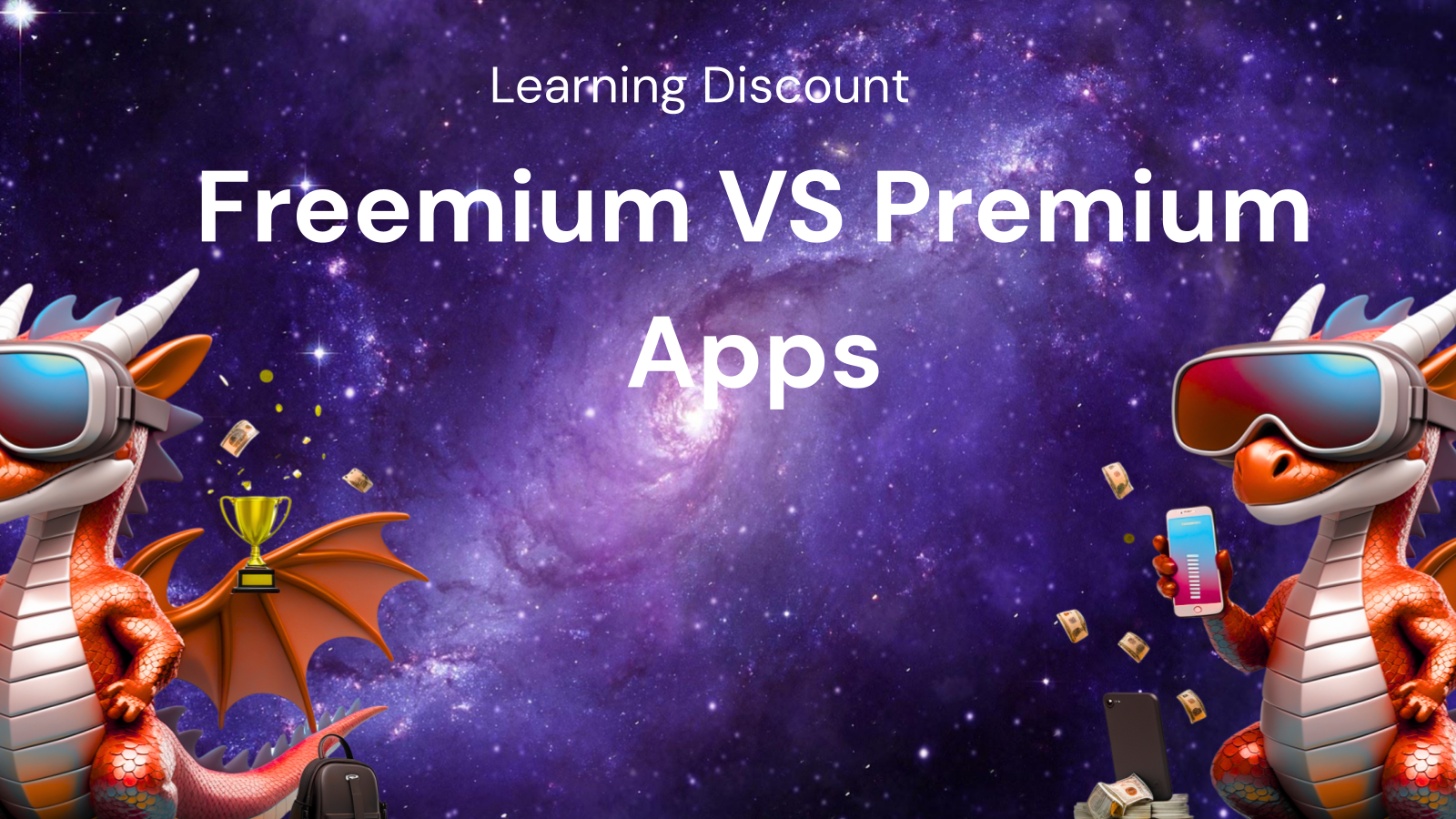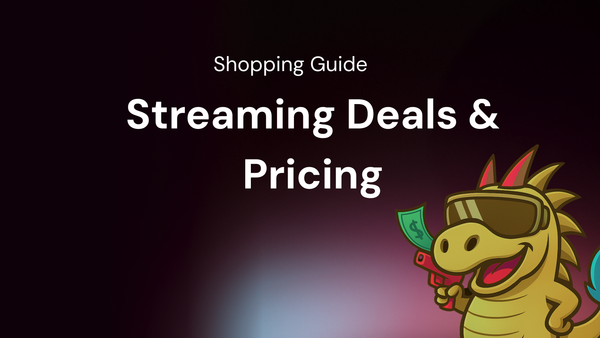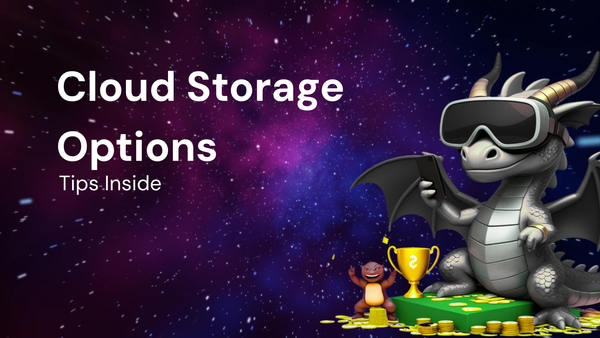Freemium Vs Premium for language learning apps with discounts

Freemium Vs Premium for Language Learning Apps with Discounts
Learning a new language has never been more accessible. Thanks to technology, we now have a plethora of language learning apps at our fingertips. However, with so many options available, choosing the right one can be overwhelming. One of the first decisions you'll face is whether to opt for a freemium or premium app. Both models have their advantages and disadvantages, and understanding the nuances of each can help you make an informed choice. This article aims to provide a comprehensive overview of the freemium vs. premium debate in the context of language learning apps, offering valuable insights to guide your decision and helping you navigate the world of discounts and special offers.
Understanding the Freemium Model
The freemium model is a popular strategy employed by many language learning apps. The name "freemium" is a combination of "free" and "premium," and it perfectly describes the core concept: offering a basic version of the app for free, while charging users for access to more advanced features, content, and an ad-free experience.
- How Freemium Works: A freemium app typically provides a selection of introductory lessons, vocabulary sets, or grammar exercises without requiring any payment. This allows users to sample the app's interface, teaching methodology, and overall learning experience. If you enjoy the free content and want to delve deeper into the language, you'll need to subscribe to the premium version.
- Common Features in the Free Version: Expect the free version to include basic vocabulary, beginner-level grammar lessons, limited exercises, and potentially distracting advertisements. Some apps might also restrict the number of daily lessons or the types of activities you can access.
- Pros of Freemium:
- Cost-Effective Entry: The most significant advantage is the ability to start learning without any financial commitment. This is perfect for beginners who are unsure if they'll stick with the language or if they like the app's learning style.
- Try Before You Buy: Freemium allows you to thoroughly test the app's features and content before investing in a subscription. You can assess its usability, teaching methods, and whether it aligns with your learning preferences.
- Gradual Progression: The free version can be sufficient for casual learners who only want to grasp basic phrases or vocabulary. You can learn at your own pace without feeling pressured to subscribe.
- Cons of Freemium:
- Limited Content: The biggest drawback is the restriction on available content. You might quickly reach a plateau and be unable to progress further without upgrading.
- Advertisements: Free versions are often riddled with advertisements, which can be disruptive and distracting to the learning process.
- Feature Restrictions: Premium features like offline access, personalized learning paths, and advanced grammar explanations are typically locked behind a paywall.
- Potentially Slower Progress: With limited exercises and content, your learning progress might be significantly slower compared to premium users.
Understanding the Premium Model
In contrast to the freemium model, premium language learning apps require an upfront payment or subscription fee to access all of their features and content. There is often no free version available, but some apps may offer a free trial period.
- How Premium Works: You typically pay a one-time fee or subscribe on a monthly or annual basis to unlock the full potential of the app. This includes access to all lessons, vocabulary sets, grammar exercises, advanced features, and an ad-free experience.
- Common Features in the Premium Version: Expect comprehensive language coverage, personalized learning paths, interactive exercises, speech recognition technology, offline access, and dedicated support from the app's developers.
- Pros of Premium:
- Comprehensive Content: Premium apps offer a wealth of learning materials, covering all aspects of the language, from basic vocabulary to advanced grammar.
- Ad-Free Experience: Enjoy a distraction-free learning environment without annoying advertisements interrupting your flow.
- Advanced Features: Unlock features like personalized learning paths, speech recognition, and offline access, which can significantly enhance your learning experience.
- Faster Progress: With access to all content and features, you can accelerate your learning progress and achieve your language goals more quickly.
- Cons of Premium:
- Upfront Cost: The initial investment can be a barrier for some users, especially those who are unsure about committing to a language.
- Risk of Dissatisfaction: If you pay for a premium app and later discover that it doesn't suit your learning style, you might feel like you've wasted your money.
- Potential Overwhelm: The sheer amount of content available in a premium app can be overwhelming for some beginners, leading to discouragement.
Key Differences Between Freemium and Premium
To further clarify the distinctions between these two models, let's examine the key differences in more detail:
- Cost: Freemium apps are initially free, but you'll likely need to upgrade to a premium subscription to access all features. Premium apps require an upfront payment or subscription fee.
- Content: Freemium apps offer limited content, while premium apps provide comprehensive language coverage.
- Features: Freemium apps typically restrict access to advanced features, while premium apps unlock all functionalities.
- Advertisements: Freemium apps often contain advertisements, while premium apps offer an ad-free experience.
- Learning Pace: Freemium apps might lead to slower progress due to content limitations, while premium apps facilitate faster learning.
Choosing the Right Model for You
The best choice between freemium and premium depends on your individual learning goals, budget, and preferences. Consider the following factors when making your decision:
- Your Learning Goals: Are you a casual learner who just wants to grasp basic phrases, or are you serious about achieving fluency? If you're serious about learning the language, a premium app is likely a better investment.
- Your Budget: Can you afford the upfront cost or subscription fee of a premium app? If you're on a tight budget, a freemium app might be a more viable option.
- Your Learning Style: Do you prefer a structured learning path or a more flexible approach? Premium apps often offer personalized learning paths, while freemium apps might be more suitable for self-directed learning.
- Your Tolerance for Advertisements: Are you easily distracted by advertisements? If so, a premium app is the better choice.
- Your Commitment Level: Are you confident that you'll stick with the language learning process? If so, investing in a premium app might be worthwhile.
Finding Discounts and Special Offers
Regardless of whether you choose a freemium or premium app, it's always a good idea to look for discounts and special offers. Many language learning apps offer promotional deals, especially around holidays or special events.
- Where to Look for Discounts:
- App Store/Google Play: Check the app store or Google Play for promotional banners or in-app notifications advertising discounts.
- App Website: Visit the app's official website to find exclusive deals or promotional codes.
- Social Media: Follow the app on social media platforms like Facebook, Twitter, and Instagram to stay informed about special offers.
- Email Newsletters: Subscribe to the app's email newsletter to receive updates about discounts and promotions directly in your inbox.
- Student Discounts: Some apps offer discounted rates for students. Check if you're eligible for a student discount.
- Bundle Deals: Consider purchasing a bundle deal that includes multiple language learning resources.
- Groupon/Other Deal Sites: Check deal websites like Groupon for discounted subscriptions to language learning apps.
- Affiliate Links: Some websites and blogs offer affiliate links that provide discounts on language learning apps.
- Types of Discounts:
- Percentage Off: A percentage discount on the subscription price (e.g., 20% off).
- Free Trial Extension: An extended free trial period to explore the app's features before committing to a subscription.
- Lifetime Subscription: A one-time payment for lifetime access to the app. This is usually the most expensive option, but it can be a worthwhile investment in the long run.
- Seasonal Sales: Discounts offered during specific times of the year, such as Black Friday, Cyber Monday, or holiday seasons.
- Referral Programs: Earn discounts by referring friends or family to the app.
- Things to Consider When Evaluating Discounts:
- Read the Fine Print: Carefully review the terms and conditions of the discount to understand any restrictions or limitations.
- Check the Expiration Date: Make sure the discount is still valid before attempting to redeem it.
- Compare Prices: Compare the discounted price with the regular price to ensure you're getting a good deal.
- Consider the Subscription Length: Evaluate the subscription length offered in the discount and whether it aligns with your learning goals.
Popular Language Learning Apps: Freemium and Premium Options
To give you a better idea of the options available, here are some popular language learning apps, categorized by their pricing model:
- Freemium Apps:
- Duolingo: One of the most popular language learning apps, Duolingo offers a comprehensive free version with gamified lessons and a wide range of languages. The premium version, Duolingo Plus, removes ads and unlocks offline access.
- Memrise: Memrise focuses on vocabulary acquisition through flashcards and spaced repetition. The free version offers a substantial amount of content, while the premium version unlocks advanced features like personalized learning and video lessons.
- Babbel: While technically offering a "freemium" model, Babbel provides only one free lesson per course. To truly benefit, a subscription is required. Babbel excels at teaching practical conversation skills.
- Premium Apps:
- Rosetta Stone: A well-established language learning platform, Rosetta Stone uses an immersive approach to teach languages. It's a fully premium app with no free version, but it often offers free trials and discounts.
- Busuu: Busuu offers both free and premium options, but the free version is very limited. The premium version provides access to comprehensive courses, personalized feedback from native speakers, and offline access.
- italki: While not strictly a "language learning app" in the traditional sense, italki connects you with native language tutors for online lessons. You pay per lesson, making it a premium, pay-as-you-go option.
Beyond Apps: Complementary Learning Resources
Remember that language learning apps are just one tool in your arsenal. To maximize your learning potential, consider incorporating other resources into your study routine:
- Textbooks: Traditional textbooks can provide a solid foundation in grammar and vocabulary.
- Workbooks: Workbooks offer practice exercises to reinforce your learning.
- Language Exchange Partners: Connect with native speakers for conversation practice and cultural exchange.
- Online Courses: Explore online courses offered by universities or language schools.
- Immersion: Immerse yourself in the language by watching movies, listening to music, and reading books in your target language.
- Travel: If possible, travel to a country where your target language is spoken to experience the culture and practice your skills in real-world situations.
The Importance of Consistency and Motivation
Ultimately, the success of your language learning journey depends on your consistency and motivation. Whether you choose a freemium or premium app, it's crucial to dedicate time to practice regularly and stay motivated.
- Set Realistic Goals: Define achievable goals to track your progress and stay motivated.
- Create a Study Schedule: Develop a consistent study schedule and stick to it as much as possible.
- Find a Learning Partner: Partnering with a fellow language learner can provide support and encouragement.
- Celebrate Your Successes: Acknowledge and celebrate your achievements, no matter how small.
- Don't Be Afraid to Make Mistakes: Mistakes are a natural part of the learning process. Embrace them and learn from them.
- Make it Fun: Find ways to make language learning enjoyable, such as watching your favorite movies in your target language or cooking recipes from that culture.
Conclusion: Finding the Right Fit for Your Language Learning Journey
Choosing between freemium and premium language learning apps is a personal decision that depends on your individual needs and circumstances. Freemium apps offer a cost-effective way to start learning, while premium apps provide comprehensive content and advanced features. By carefully considering your learning goals, budget, and preferences, and by actively seeking out discounts and special offers, you can find the perfect app to support your language learning journey. Remember that consistency and motivation are key to success, regardless of the model you choose. Good luck on your linguistic adventures! Remember to explore various resources and find the combination that works best for you, and most importantly, enjoy the process of learning a new language!




